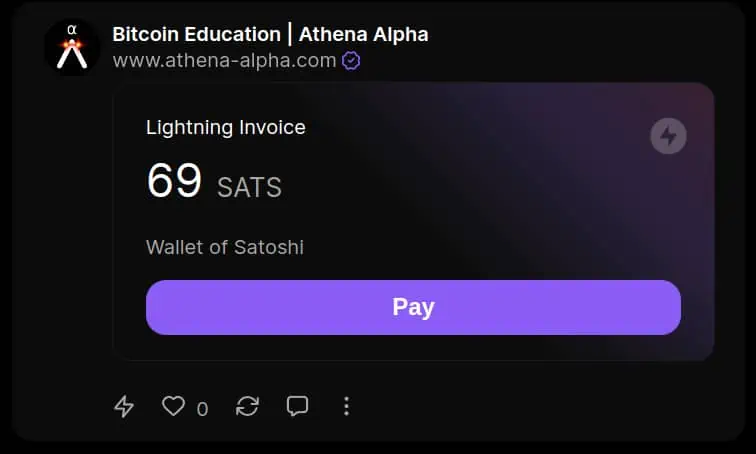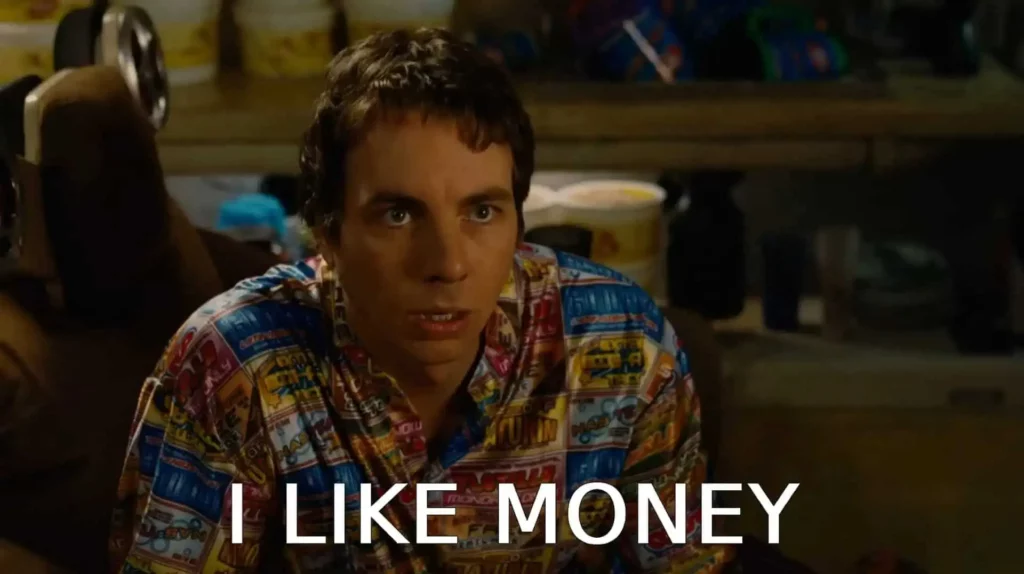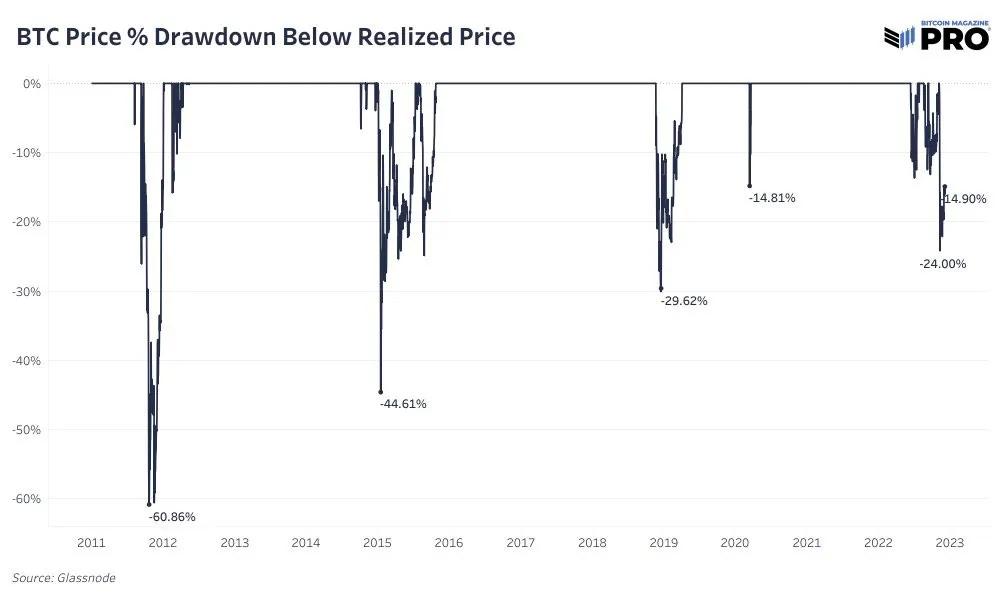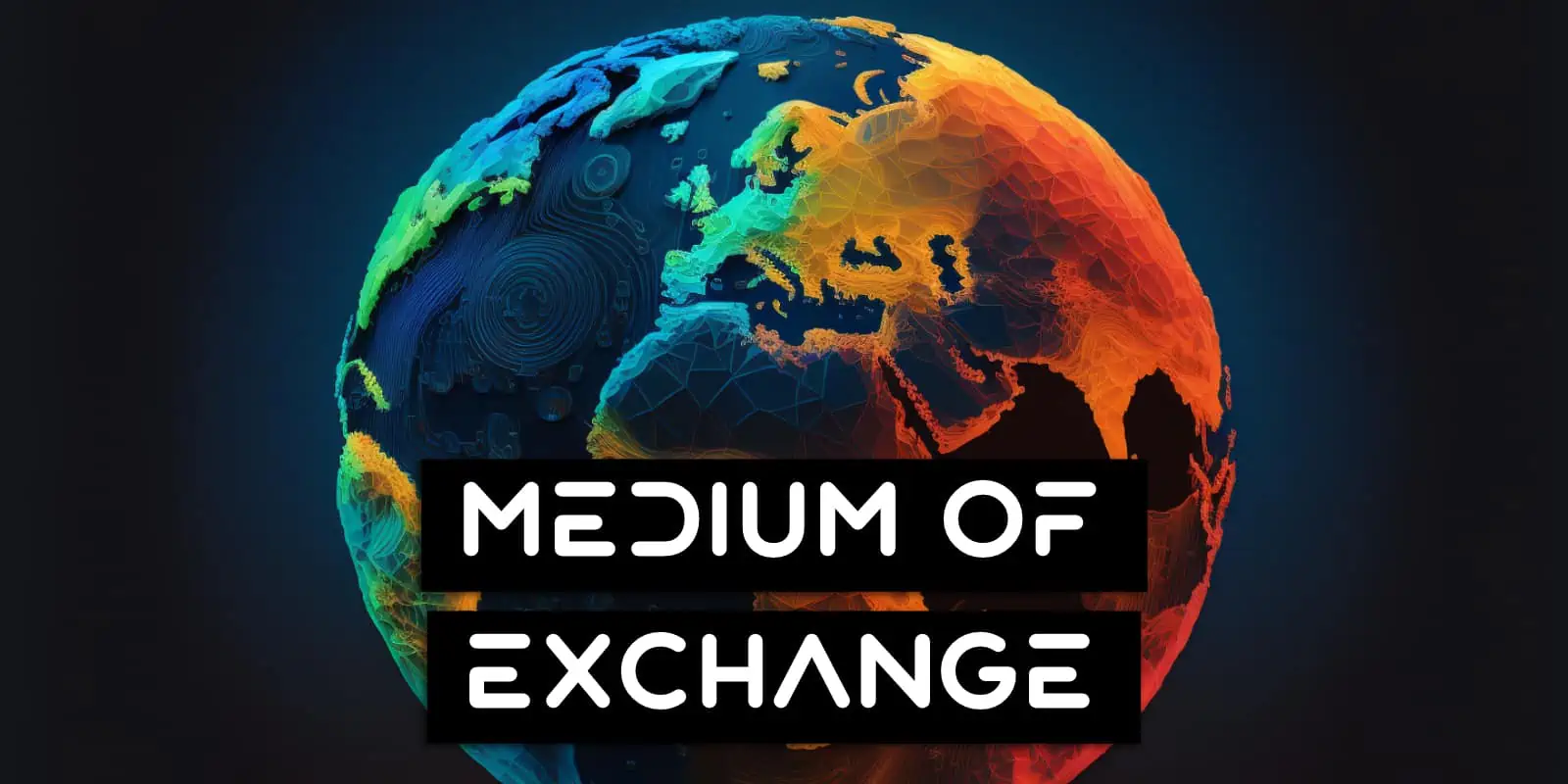The original Bitcoin Whitepaper describes Bitcoin as a “peer-to-peer electronic cash system”. This of course makes people ask: is Bitcoin a medium of exchange? This is because that’s exactly what we use cash for now… but it misses something pretty obvious.
New technologies don’t just magically turn up 100% fully completed and perfect. When Steve Jobs dropped the OG iPhone all those years ago it didn’t even have 3G or an App store! It was nothing like the polished, sleek iPhone you get today, but it was still a phone.
Similarly, while Bitcoin functions as a medium of exchange and can be used as electronic cash right now, the answer to this question is a bit more complicated. So let’s simplify it and also peer into what the future holds for this amazing new technology.
This is the second part of our three part series on the functions of money. Our hope is that this series helps everyone to better understand money at a base level. The other two parts are Store Of Value and Unit Of Account.
Contents
Is Bitcoin A Medium Of Exchange?
Yes. While many “experts” like to claim it’s not, Bitcoin is in fact being used by millions of people all around the world as a medium of exchange right now. One only has to look at the long lists in our What Can You Do With Bitcoin? post to see this.
From bricks and mortar to online stores there are now hundreds of thousands of businesses that accept Bitcoin daily as payment. I’m sure you’ve seen them here and there and maybe even purchased something already with sats. However this buying of goods and services is just one aspect.
Protesters from Belarus to Nigeria use it to protect themselves and carry on the fight, women in developing countries use it to get paid even though it’s illegal for them to have a bank account and many more use it to send billions in remittance each year. To say that it’s not a medium of exchange while millions actively use it every day is gas lighting plain and simple.

Recently the new communications protocol Nostr (Notes and Other Stuff Transmitted by Relays) has also integrated with Bitcoin via its Lightning Network. You can now “zap” sats to anyone, anywhere instantly just like you might “Like” a post. If you want to give it a try you can send us some sats by clicking on the lightning bolt under our profile then give us a follow! These “zaps” are already being used to pay people for doing work, often anonymously.
All of these examples encompass the use of Bitcoin as a Medium of Exchange, however it’s important to note that people in different parts of the world view and use money differently. One can make the case that Bitcoin isn’t used as a Medium of Exchange if they’re only referring to first world countries… while at the same time other countries have adopted it as legal tender.
Day to day, your average person in France or the USA isn’t going out and buying their coffee with sats. It absolutely can be done and used that way, but most don’t currently do it. We’ll get to why this is the case later, but perhaps we’re getting a bit ahead of ourselves.
What Is Medium Of Exchange?
When money is used as a medium of exchange it means that people are using it as an instrument to purchase or sell goods and services. So for example you may use $10 USD as the medium and exchange it for some food.
When most people think of money and how it’s used they think of this “medium of exchange” use case, however there’s actually a number of steps that a money goes through with this just being one of the stages.
As most monies in the world (USD, gold etc) have all fully gone through this process already, it’s not something most think or even know about. Generally a new money like Bitcoin goes through four stages:
- Collectable: To begin with, a money is wanted simply because it’s got a strange property to it. Maybe it’s really shiny or different or just appeals to the person for whatever reason. Think things like glass beads, shells or even gold. The thing is interesting so people collect it.
- Store Of Value: As more and more people collect the new thing (and it persists over time) it starts to be recognized as a way to store value for long periods of time. As more and more people figure this out, demand for the money increases and it becomes more valuable which leads to more demand, more production of the money and so on. Depending on the demand and supply dynamics, the value of the new money can be highly volatile through multiple supply and demand cycles. This is the stage Bitcoin is currently in and why it’s so volatile. As this demand is finally saturated the increasing value will plateau, making its value more stable which allows the next stage to begin.
- Medium Of Exchange: During the Store Of Value stage it makes sense to hold onto your new money, as by doing this it will buy more at a later time. Once the purchasing power of it has stabilized though this logic no longer applies and people will be more open to spending it on goods and services. The Medium Of Exchange stage is what most normal people ascribe to “money” these days.
- Unit Of Account: As the new money is used by more and more people and acceptance of it grows so too does it get integrated into the financial systems of the world. Accounting software gets updated to include it. Shops sell their goods denominated in the new money instead of the old. Most importantly, these people no longer buy the new money simply to exchange it for another one later on. When people accept Bitcoin and don’t refer to its value as $XYZ USD then it will have reached this final stage.
Medium Of Exchange is generally seen as the main part of any money. Developing a monetary network globally from the ground up also takes a lot of time! Some people arrive earlier than others just like with any new technology and eventually as time goes by we’ll see the early and then late majority get on boarded.
Why No One Buys Things With It… Yet
As a money “monetizes” or moves through the various stages outlined above, its value as compared to other monies increases. Specifically, in the second stage “Store Of Value” which is where Bitcoin is now, the price increases in bursts as adoption of the money happens in cascading waves over time.
These waves of new people usually get on boarded during crypto bull markets and can result in the price being highly volatile. Maybe there’s a huge influx of new people wanting to buy bitcoins, but due to low liquidity there’s not enough to go around. Supply drops, demand increases and you get a bubble that eventually bursts.
Time goes by and these waves occur again and again with the Bitcoin Halving events making the volatility even worse. This high volatility then attracts day traders that are looking to make a quick buck which further distorts the price and volatility of Bitcoin.

The result of this process is that you have a new money that’s increasing in value, but is highly volatile. Due to most people not understanding money properly, they focus on the volatility side of things claiming that people don’t want to buy their coffee with bitcoins because it goes up and down. While this is partly true, the ongoing increasing value is actually the main reason why no one buys things with it yet. There’s even a fancy “law” for it!
Gresham’s Law
We aim to explain things simply here so let’s give an example where you have two monies:
- 1 bitcoin (valued at $60,000 USD)
- $60,000 USD in cash
You notice that the 1 bitcoin buys more and more each year while the USD keeps being inflated away and buys less and less. When you go to the store to buy your food for the week which money should you use?
If you said the USD cash then congratulations, you’re a person doing the rational economical thing!
As the purchasing power of the USD is falling, it makes sense to spend it as fast as possible. It also make sense to hold onto the bitcoin for as long as it’s going up in price as that’s essentially free money.
This pretty straight forward logic of not wanting to spend a “good” money (bitcoins) that is increasing in value is what’s called Gresham’s Law. Officially it states that “bad money drives out good” meaning that in an economy with two monies, the good one will be held as savings (bitcoins) while the bad one will be spent day to day (USD).
If everyone in the economy does this, then you end up having everyone holding bitcoin and never actually using it as a medium of exchange! Not spending bitcoins is just the financially sensible thing to do right now. The only way that people will ever start using it to buy and sell goods and services is if the value of it stabilizes for a long period of time.
This price stabilization comes naturally once everyone, everywhere has all the bitcoins they can afford and the waves of on-boarding slows down and then, stops. At this point holding onto your bitcoins for a year or more won’t really make much of a difference and so people won’t mind spending it to buy groceries or other things. This stability will then reduce speculation as there will no longer be the needed volatility to make a quick buck. The money will have finished the Store of Value stage.

Raw data backs up this narrative too, with volatility steadily decreasing as time goes on as documented in a 2021 paper by Dirk G. Baur & Thomas Dimpfl. More recently we also saw Bitcoin actually become more stable than stocks! We’re still clearly in the Store of Value stage at the moment, but with every passing year Bitcoin develops and the market gets bigger.
The Athena Assessment
Over the next decade Bitcoin will complete this Store of Value stage and slowly move more and more into the Medium Of Exchange stage. The market will be so big that it won’t matter if some whale buys $100 billion worth of bitcoins. Liquidity will be plentiful and deep and the price will stabilize to a level that is acceptable by most people similar to what we see with top fiat currencies today.
At this point many billions of people will have been on boarded and own bitcoins. People will be happy to spend their sats safe in the knowledge that they can buy them back again at roughly the same rate a year or two later.
While this process happens, Bitcoin can address other core issues such as scalability and the one we focus on the most here: understanding and education.
It’s good to note that at one point, no one knew how to use Email or even “what the Internet was”, but now we all do. That process of teaching and learning isn’t instant and takes considerable time, hopefully we here at Athena Alpha can help you get ahead of the game!
FAQ
Is Bitcoin A Medium Of Exchange Or Store Of Value?
Both! Bitcoin is used by many millions of people as a medium of exchange every day. Many millions more also use it to store value over long periods of time. Currently more people seem to use it as a Store Of Value, but over the next decade it will likely shift to be used more as a medium of exchange as the price stabilizes.
Is Bitcoin An Exchange?
No. Bitcoin is a Cryptocurrency where as a Crypto Exchange is something you use to trade one currency for another.
Is Bitcoin Money?
Yes. Bitcoin is one of the hardest and most advanced monies that has ever existed. You can read more in our piece Is Bitcoin Real? And Is It Safe?
Is Bitcoin A Unit Of Account?
For the most part, no. While some people have already switched to the Bitcoin Standard (where they use bitcoins to denominate all value), most people in the world do not currently use it as this.
This is perfectly normal though as Unit of Account is the final stage of the monetization process. It’s expected that over the next 10 years or so Bitcoin will develop into being used as a Medium of Exchange. After this stage is finally completed it can then begin the next stage which is to be used as a Unit of Account.
Why Does Bitcoin Have Value?
Bitcoin has value because it ranks highly in all but one of the six characteristics of money. You can learn more about these characteristics and why they’re important to all monies here: 4 Breakthrough Characteristics Of Bitcoin (And Why It Has Value)



